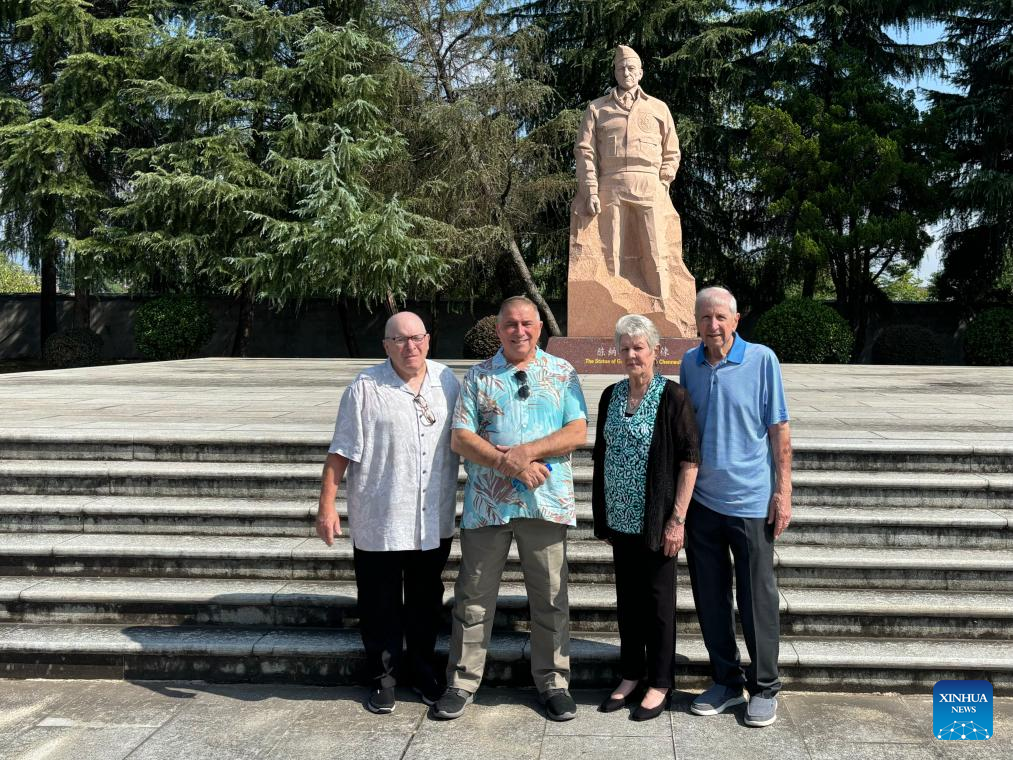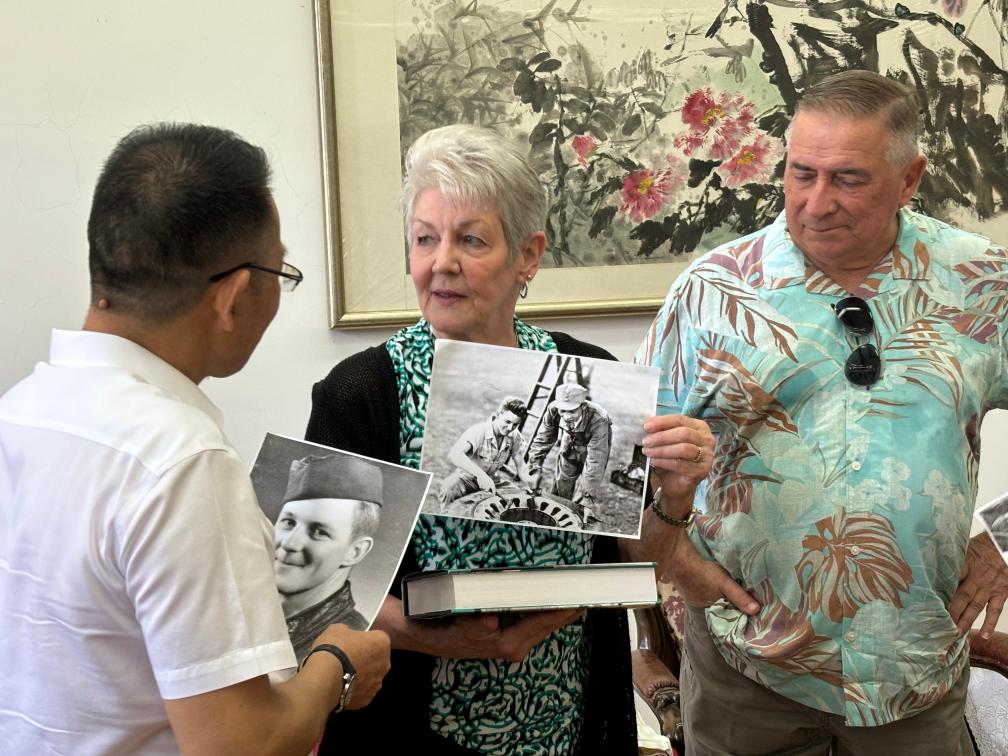
Members of the Sino-American Aviation Heritage Foundation and descendants of Flying Tigers veterans pose for a group photo with the statue of U.S. General Claire Lee Chennault in Zhijiang County, central China's Hunan Province, Sept. 8, 2024.(Xinhua/Yu Chunsheng)
CHANGSHA, Sept. 8 (Xinhua) -- Members of the Sino-American Aviation Heritage Foundation and descendants of Flying Tigers veterans on Sunday visited central China's Zhijiang county, where Chinese army accepted the surrender of the Japanese during World War II.
Although this is not the first time for many members of the delegation to visit Zhijiang, this trip was still full of surprises for them, and some members looked forward to "bringing more (American) students to Zhijiang again."
During the war, Zhijiang attracted a number of air force units to station in its airport, among which the Flying Tigers spent the longest time. Since its first landing on June 9, 1943, the Flying Tigers did not leave until Sept. 19, 1945, after the victory of the war.
The delegation paid a visit to a memorial hall dedicated to the Flying Tigers veteran pilots. They carefully looked at the old photos, military uniforms, aircraft models, combat maps and other exhibits. Several color photographs, taken in the 1940s, were particularly eye-catching.
"These precious color photos were donated by an American communication soldier, who witnessed the entire process of the Japanese army's surrender in Zhijiang and took a large number of photos," said Wu Jianhong, curator of the memorial hall.
In the memorial hall, there are also many exhibits donated by friendly people from the United States.
"This is the photo you donated last year," Wu told Margaret Kincannon, a descendant of the Flying Tigers veteran, in front of a new showcase.
This time, Margaret brought three new photos to donate. One is a portrait of her father, and the other two are photos of her father with Chinese pilots and technicians.
"Decades passed, and my father still remembered the names of Chinese technicians at that time," she said. She was surprised to find that her photo of attending an activity in Zhijiang last year was also placed in the memorial hall.
Wu said the memorial hall should not only show the people the history of China and the United States fighting side by side, but also record the inheritance of the friendship between the Chinese and American people, which makes the memorial hall full of vitality.
The "Flying Tigers Friendship" does continue among the younger generations of China and the United States.
Less than 2 km away from the former site of the Flying Tigers barracks stands Zhijiang No.4 Middle School. In November last year, it became a sister school of "Flying Tigers Friendship" with Jack Lund Schofield Middle School in the United States.
This trip was the fifth of its kind by Jeffrey Greene, chairman of the Sino-American Aviation Heritage Foundation.
At the Zhijiang No.4 Middle School, Jeffrey expressed the hope that more students will come here to learn about the history of Flying Tigers, and more Chinese students will visit the United States to communicate with Flying Tigers veterans and their descendants.
The Flying Tigers, formally known as the American Volunteer Group of the Chinese Air Force, was formed in 1941 by U.S. General Claire Lee Chennault. They came to China to help the Chinese people fight the invading Japanese troops. ■

Margaret Kincannon (C), a descendant of the Flying Tigers veteran, displays a photo she donated to a memorial hall dedicated to the Flying Tigers veteran pilots in Zhijiang County, central China's Hunan Province, Sept. 8, 2024.(Xinhua/Yu Chunsheng)



